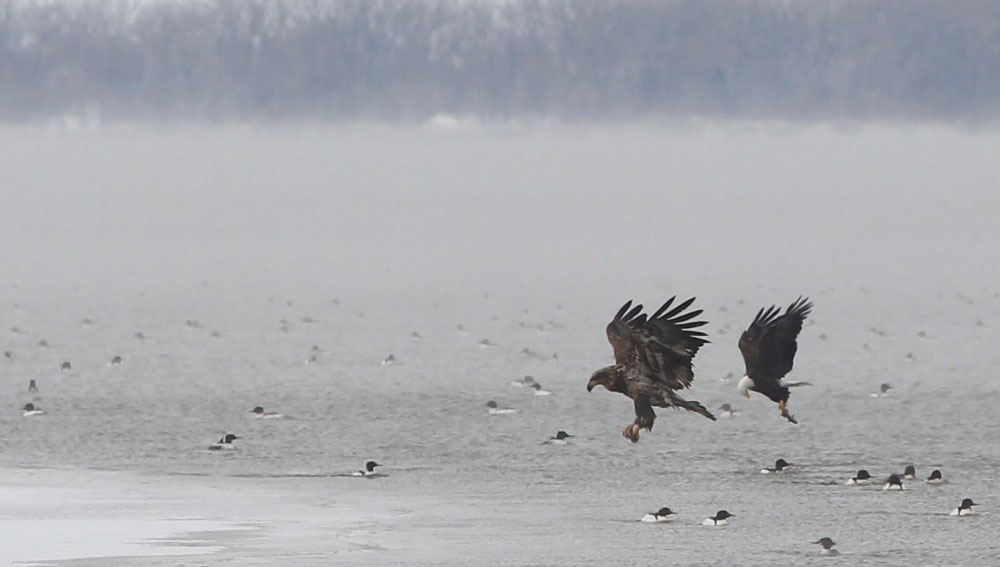
By Julie Geiser
Bald eagles are one of my favorite birds to view during the winter months – when ice covers the rivers and reservoirs eagles will search out any open areas of water to fish or they find places where an easy meal is available.
Living near reservoirs that have inlets or spillways is an advantage for eagle viewers as those areas will attract these gorgeous big birds of prey.
Finding areas to fish from is a must in the winter for eagles and they are proficient at catching their next meal when there is open water.
Eagles are opportunists – they follow waterfowl knowing an easy meal usually occurs among large numbers of ducks and geese.
Once a meal is caught keeping it away from other eagles is the tricky part.
These majestic birds are worth spending some time in the field viewing.
The Central Nebraska Public Power and Irrigation District provides free facilities for the public to view eagles and other wildlife in southwest Nebraska.
Ogallala’s eagle-viewing facility is just below the south end of Kingsley Dam at Lake Ogallala. The facility is open on Saturdays & Sundays, through early March, 8 am to 2 pm MST. There are several eagles and waterfowl for great bird viewing. Don’t forget your camera and binoculars when visiting.
Eagle viewing can be done during the week by watching the birds from Lake Ogallala’s internal park roadways; a 2014 park permit is required to enter the SRA.
The Johnson No. 2 Hydro or (J-2), has bleachers situated in front of large windows which look over the Supply Canal. Spotting scopes are provided, but you may want to bring you own binoculars – there are attendants available to answer questions. J-2 is located about seven miles south of Lexington. Signs along area roads will help guide visitors to the plant. The J2 viewing area is open on Saturdays & Sundays through the first weekend of March, 8 a.m. to 2 p.m CST.
Both facilities offer a great vantage point to watch eagles as they soar in the sky, catch fish, and sit on the ice and in nearby trees.
You can find more information and maps of the facilities by going online at The Central Nebraska Public Power and Irrigation District web site.
